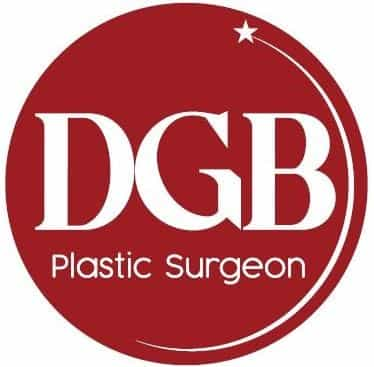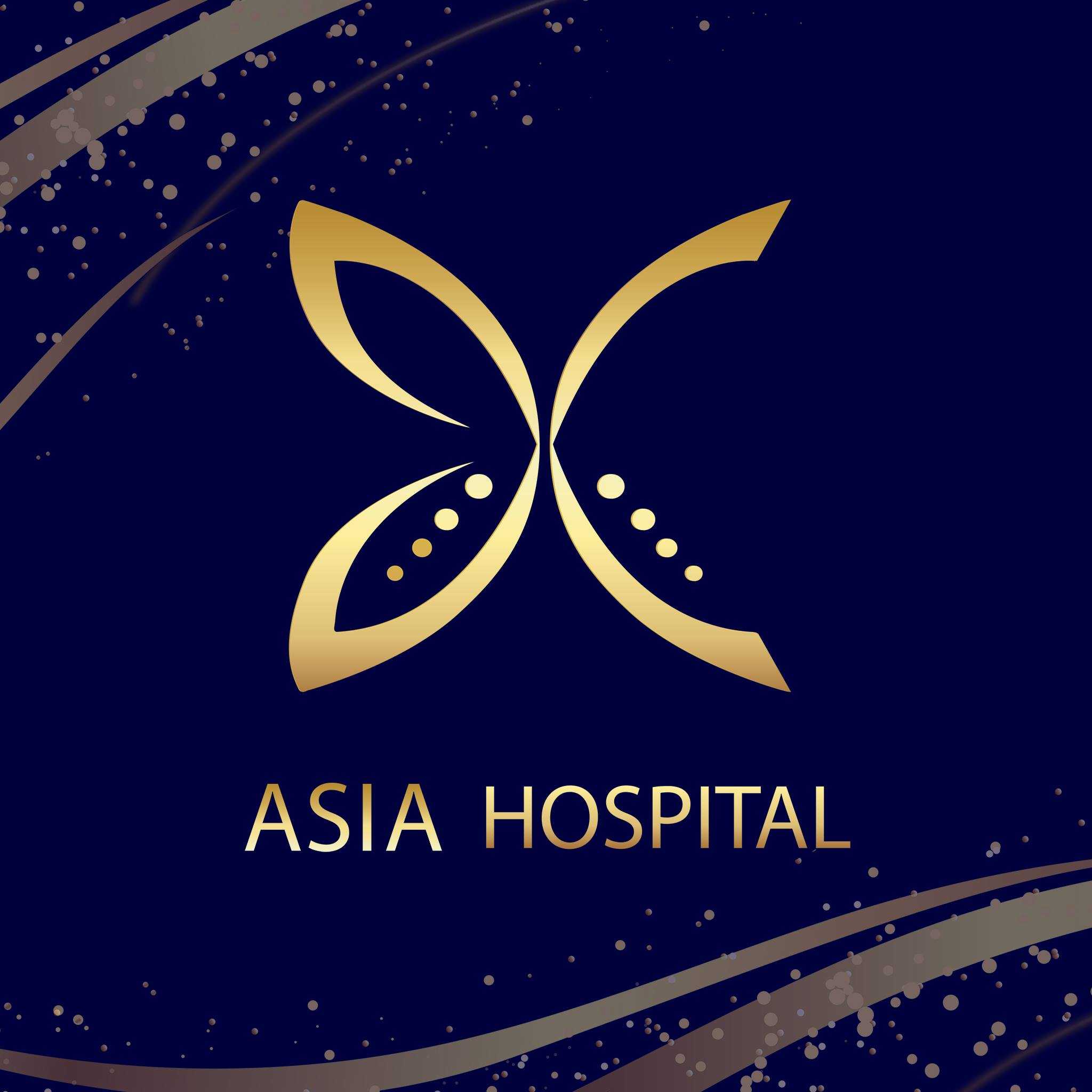Overview: Mini Tummy Tuck vs Full Abdominoplasty in Thailand
.jpg)
Deciding between a mini tummy tuck and a full abdominoplasty is a crucial step for anyone looking to achieve a flatter, more toned abdominal profile. This decision becomes even more complex when considering medical tourism destinations like Thailand, known for its excellent healthcare facilities and attractive pricing.
While both procedures aim to improve the appearance of the abdomen, they differ significantly in their scope, the extent of correction they provide, and consequently, their price points. Understanding these differences is key to making an informed choice that aligns with your aesthetic goals and budget.
Many individuals seek procedures like a mini tummy tuck or full abdominoplasty in Thailand after significant weight loss, pregnancy, or simply due to aging, which can result in loose skin, weakened abdominal muscles, and stubborn fat deposits.
Thailand's reputation for highly skilled plastic surgeons, state-of-the-art clinics, and a welcoming environment makes it a top choice. This guide will help you understand the core differences between a mini tummy tuck and a full abdominoplasty in Thailand, delve into their respective price ranges, and answer common questions to help you plan your journey effectively.
What is the primary difference between a mini tummy tuck and a full abdominoplasty?
The core distinction lies in the scope of correction. A mini tummy tuck, also known as a partial abdominoplasty, is ideal for individuals with minimal excess skin and fat primarily located below the belly button. It involves a smaller incision, typically just above the pubic area, and does not require repositioning the navel. This procedure is less invasive, has a shorter recovery time, and focuses on subtle improvements.
In contrast, a full abdominoplasty is a more extensive procedure designed for those with significant loose skin, stretched abdominal muscles, and stubborn fat deposits across the entire abdomen, both above and below the navel.
This surgery involves a longer incision spanning from hip to hip, a second incision around the navel to reposition it, and extensive tightening of the abdominal muscles (diastasis recti repair). It offers a more dramatic transformation, creating a flatter, firmer abdominal contour.
How do mini tummy tuck vs full abdominoplasty prices compare in Thailand?
Thailand is renowned for offering cosmetic procedures at a fraction of the cost compared to Western countries, without compromising on quality. The price difference between a mini tummy tuck and a full abdominoplasty in Thailand is substantial, primarily due to the surgical time, anesthesia required, and the complexity of the operation.
Here's a general cost comparison:
| Procedure Type | Estimated Price Range (USD) in Thailand | Description |
|---|---|---|
| Mini Tummy Tuck | $3,000 - $6,000 | For minor skin laxity below the navel, less invasive. |
| Full Abdominoplasty | $5,000 - $10,000 | For significant skin, fat, and muscle issues across the entire abdomen, more extensive. |
These figures are estimates and can fluctuate based on the specific clinic, the surgeon's experience, the city in Thailand (e.g., Bangkok, Phuket), and whether additional procedures are combined (e.g., liposuction). It's always recommended to get a personalized quote after a consultation.
What factors influence the final cost of a tummy tuck in Thailand?
While the base price provides a good starting point, several elements contribute to the total expenditure for either a mini tummy tuck or a full abdominoplasty in Thailand. Understanding these factors will help you budget accurately for your medical trip.
- Surgeon's Fees: Highly experienced and reputable plastic surgeons often charge more for their expertise. Their fees usually include consultation, surgery, and follow-up care.
- Anesthesia Fees: The cost of anesthesia depends on the type (general vs. local with sedation) and the duration of the surgery, which is longer for a full abdominoplasty.
- Hospital/Clinic Facility Charges: These cover the use of the operating room, recovery room, and any overnight stay if required. Premium facilities may have higher charges.
- Pre-operative Tests: Blood tests, EKG, and other medical evaluations are necessary to ensure you are a suitable candidate for surgery.
- Post-operative Garments & Medications: Compression garments are essential for healing and reducing swelling, and pain medication will be prescribed.
- Additional Procedures: It's common for liposuction to be performed simultaneously with a tummy tuck to refine body contours, which will add to the overall cost.
What is the typical recovery time for a mini tummy tuck versus a full abdominoplasty in Thailand?
The recovery period is a significant consideration, especially for medical tourists traveling to Thailand. Since a mini tummy tuck is less invasive, its recovery is generally shorter and less demanding. Patients often experience mild discomfort, swelling, and bruising, which subsides quickly. Most individuals can resume desk work or light activities within a week to ten days, though strenuous exercise should be avoided for 4-6 weeks.
For a full abdominoplasty, the recovery process is more extensive. Patients typically require a longer hospital stay (often 1-2 nights) and will experience more significant pain, swelling, and bruising.
Drains may be placed temporarily to collect fluid. Returning to light daily activities usually takes 2-3 weeks, and it can take 6-12 weeks or even longer before full physical activity can be resumed. A compression garment must be worn continuously for several weeks to support healing and reduce swelling. Planning for adequate rest and support during this period is crucial, especially when abroad.
Who is an ideal candidate for a mini tummy tuck, and who is better suited for a full abdominoplasty?
Choosing the right procedure depends heavily on your individual anatomy and aesthetic goals. A thorough consultation with a qualified plastic surgeon in Thailand is essential to determine which option is best for you.
Ideal Candidate for Mini Tummy Tuck:
- Has good skin elasticity overall but localized loose skin or a small "pooch" below the belly button.
- Experiences minor abdominal muscle laxity below the navel.
- Is at or near their ideal body weight.
- Desires a more subtle improvement in the lower abdomen.
- Has realistic expectations and understands the limitations of the procedure.
Ideal Candidate for Full Abdominoplasty:
- Has significant excess skin and fat both above and below the belly button.
- Suffers from weakened or separated abdominal muscles (diastasis recti) often due to pregnancy or significant weight fluctuations.
- May have stretch marks across the entire abdomen that they wish to remove.
- Is at a stable weight and has no plans for future pregnancies.
- Seeks a more comprehensive and dramatic transformation of the entire midsection.
What are the benefits of choosing Thailand for a tummy tuck procedure?
Thailand has established itself as a leading destination for medical tourism, particularly for cosmetic surgery. The appeal extends beyond just competitive pricing to a comprehensive package of quality care, advanced facilities, and a unique recovery experience.
Key benefits include:
- Cost-Effectiveness: As highlighted, the prices for mini tummy tuck and full abdominoplasty in Thailand are considerably lower, making these procedures accessible to a wider range of patients.
- High-Quality Healthcare: Many hospitals and clinics in Thailand are accredited by international organizations like the Joint Commission International (JCI), ensuring adherence to global standards of patient safety and care.
- Experienced Surgeons: Thai plastic surgeons are often highly trained, with many having international qualifications and extensive experience in performing a wide range of cosmetic procedures.
- State-of-the-Art Facilities: Medical facilities in major Thai cities boast modern equipment, advanced technology, and luxurious amenities, offering a comfortable and safe environment for surgery and recovery.
- Medical Tourism Packages: Many clinics offer all-inclusive packages that can cover accommodation, airport transfers, and sometimes even post-operative care, streamlining the travel and treatment process.
- Discreet Recovery: Patients can enjoy a private recovery period in a beautiful, tranquil setting, often combining their medical trip with a relaxing vacation.
What are the potential risks and complications associated with tummy tuck surgery?
Like any surgical procedure, both mini tummy tuck and full abdominoplasty carry inherent risks. While surgeons in Thailand strive for the highest safety standards, it's crucial for patients to be aware of potential complications.
Common risks include:
- Infection: Though preventable with proper sterile techniques and antibiotics, infection can occur at the incision sites.
- Bleeding/Hematoma: Internal bleeding (hematoma) can lead to swelling and discomfort, sometimes requiring drainage.
- Poor Wound Healing: Issues can arise, especially for smokers or individuals with certain medical conditions, potentially leading to widened or noticeable scars.
- Seroma: Accumulation of fluid under the skin, which may require aspiration with a needle.
- Numbness or Sensation Changes: Temporary or, in rare cases, permanent changes in skin sensation around the treated area.
- Unfavorable Scarring: While scars are inevitable, some individuals may develop hypertrophic or keloid scars, which are thicker and more raised.
- Anesthesia Risks: As with any surgery requiring anesthesia, risks such as allergic reactions or respiratory problems exist.
- Asymmetry: Slight differences in abdominal contour or navel position can occur, though skilled surgeons aim for symmetry.
Choosing a board-certified and experienced surgeon, following all pre- and post-operative instructions diligently, and disclosing your full medical history are critical steps in minimizing these risks.
What is typically included in a tummy tuck price package in Thailand?
When you receive a quote for a tummy tuck in Thailand, it's important to understand exactly what services are encompassed within that price. While packages vary between clinics, a typical offering generally covers the essential medical aspects of the procedure.
Here's what you can generally expect to be included:
- Surgeon's Fees: Covering the surgeon's expertise, surgical planning, and the procedure itself.
- Anesthesiologist's Fees: The cost of the anesthesia and the professional administering it.
- Operating Room and Facility Charges: Use of the surgical suite and hospital amenities.
- Pre-operative Consultations: Initial assessments and discussions with the surgeon.
- Standard Post-operative Care: Usually includes a few follow-up appointments with the surgeon or nursing staff during your stay.
- Required Medications: Pain relief and antibiotics during your immediate recovery.
- Compression Garment: A crucial item for optimal healing and reducing swelling.
It is vital to clarify with your chosen clinic if items like pre-operative medical tests, extended overnight stays, specialized nursing care, or specific post-operative therapies are included, or if they represent an additional cost. Some larger medical tourism providers may offer packages that bundle flights, accommodation, and airport transfers, which can be convenient but also come at a higher overall price.
How should one prepare for a tummy tuck surgery in Thailand as a medical tourist?
Planning for surgery abroad requires careful preparation to ensure a smooth and safe experience. For a tummy tuck in Thailand, several steps are crucial for medical tourists.
Here’s a checklist to guide your preparation:
- Thorough Research: Investigate clinics, hospitals, and surgeons. Look for international accreditations (like JCI), read patient reviews, and verify surgeon credentials.
- Virtual Consultations: Schedule online consultations with potential surgeons to discuss your goals, medical history, and clarify the procedure type and costs.
- Medical Clearance: Obtain a full medical check-up from your local doctor to ensure you are fit for surgery. Provide all relevant medical records to your chosen Thai surgeon.
- Travel Arrangements: Book flights and accommodation well in advance. Consider hotels with good accessibility and amenities suitable for post-surgical recovery.
- Allocate Sufficient Recovery Time: Plan to stay in Thailand for the recommended recovery period (at least 1-2 weeks for mini, 2-3 weeks for full abdominoplasty) before flying home.
- Travel Insurance: Purchase comprehensive travel insurance that includes medical emergencies and repatriation, specifically covering elective surgery abroad if possible.
- Financial Planning: Ensure all costs are clear and budgeted for, including unforeseen expenses, medication, and comfort items during recovery.
- Pack Smart: Bring loose, comfortable clothing, slip-on shoes, and items for entertainment during your recovery period.
How can I choose a reputable clinic and surgeon for a tummy tuck in Thailand?
Selecting the right medical provider is paramount for a successful and safe tummy tuck experience in Thailand. Due diligence is key to ensuring you receive high-quality care.
Consider these factors when making your choice:
- Accreditation: Look for hospitals or clinics that have international accreditations, such as those from the Joint Commission International (JCI). This signifies adherence to global standards of patient safety and quality of care.
- Surgeon's Qualifications and Experience: Verify that the surgeon is board-certified in plastic surgery and has extensive experience specifically with abdominoplasty procedures. Ask about their training, how many tummy tucks they perform annually, and their specialization.
- Facility Standards: Ensure the clinic or hospital is modern, well-equipped, and maintains high hygiene standards. Ask about operating room protocols and emergency procedures.
- Before-and-After Photos: Request to see a portfolio of the surgeon's previous work, paying close attention to cases similar to yours. This provides insight into their aesthetic style and results.
- Patient Testimonials and Reviews: Read reviews on independent platforms and forums. Be cautious of overly positive or negative reviews that lack detail.
- Clear Communication: Choose a clinic where communication is clear, and staff are responsive to your questions and concerns, ideally with English-speaking coordinators.
- Comprehensive Consultation: A good surgeon will conduct a thorough assessment, discuss realistic expectations, explain risks, and outline the recovery process.
Is it common to combine a tummy tuck with other procedures in Thailand, and how does it affect the price?
Combining procedures, often referred to as a "mommy makeover" if it includes breast surgery, is a popular option in Thailand, allowing patients to address multiple cosmetic concerns in one surgical session. This can be efficient as it consolidates recovery time and anesthesia exposure.
Common combinations with a tummy tuck include:
- Liposuction: Frequently performed with both mini and full tummy tucks to sculpt surrounding areas like the flanks (love handles), back, or thighs, enhancing the overall abdominal contour.
- Breast Augmentation or Lift: Often combined with a tummy tuck to restore body proportions after pregnancy or significant weight changes.
- Buttock Augmentation (BBL): For those seeking a more hourglass figure, BBL can complement the flatter abdomen achieved with a tummy tuck.
Combining procedures will undeniably increase the total cost. This is because each additional procedure adds to the:
- Surgical Time: Longer time in the operating room.
- Anesthesia Duration: Increased fees for the anesthesiologist.
- Surgeon's Fees: The surgeon charges for each procedure performed.
- Facility Charges: Extended use of the operating room.
- Complexity: More intricate planning and execution.
While the overall price increases, combining procedures can sometimes be more cost-effective than undergoing each surgery separately, as it avoids duplicate fees for things like initial consultations, pre-operative tests, and hospital stays. Discussing your comprehensive aesthetic goals with your Thai surgeon will help determine the most suitable and cost-efficient approach.
Ready to explore your options for a mini tummy tuck or full abdominoplasty in Thailand? Visit PlacidWay today to connect with world-class clinics and surgeons and plan your medical journey!
```


.png)














Share this listing